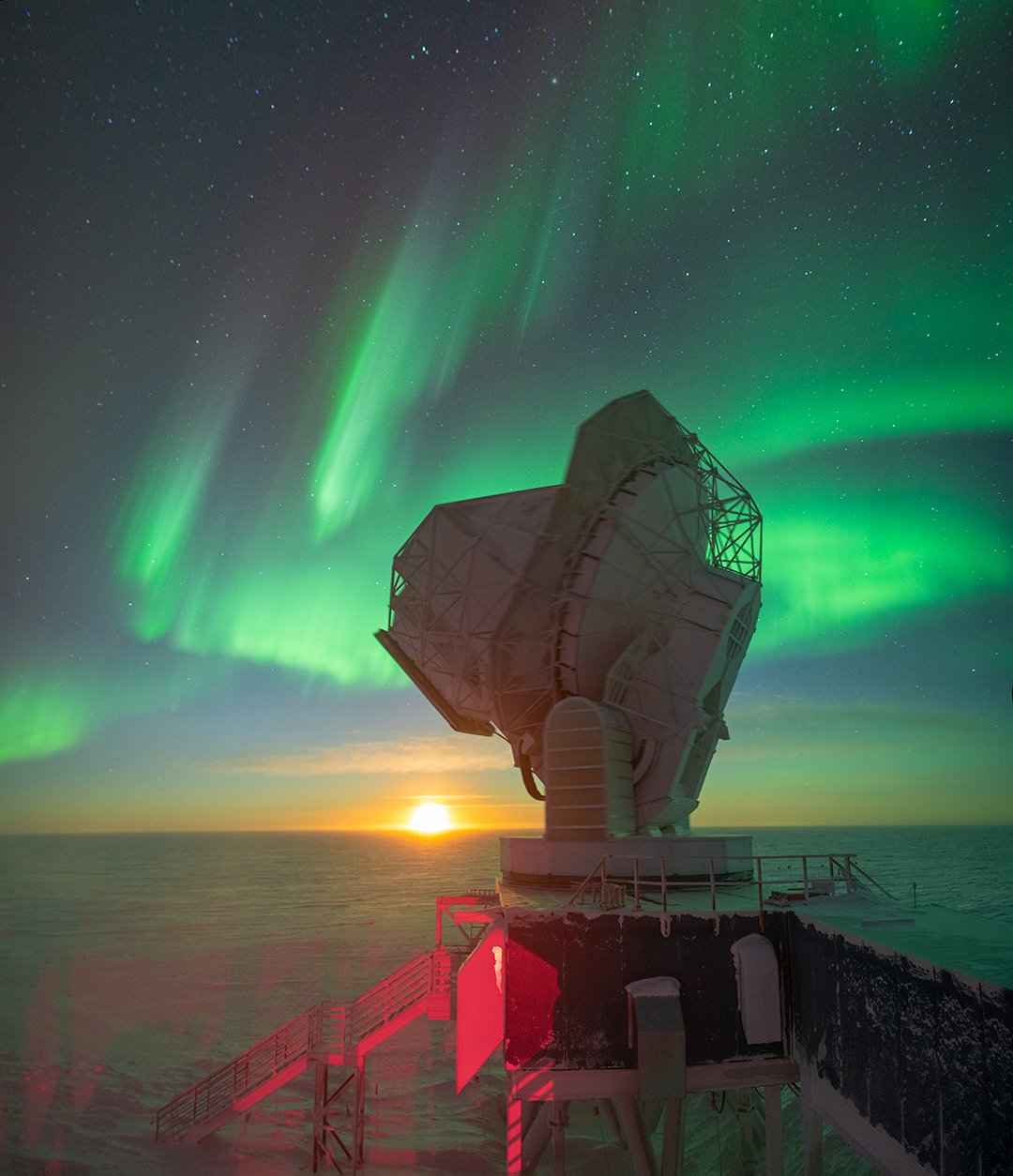Ancient cosmic light that has uniformly filled the universe since around 400,000 years after the Big Bang could act like a treasure map that guides scientists to the secrets of dark matter.
The Cosmic Microwave Background (CMB) refers to the first light to freely travel across the universe. Its journey began after space had expanded and cooled enough to allow electrons and protons to form the first atoms, meaning electrons were no longer endlessly scattering photons, and the universe instantly went from being opaque to being transparent.
The CMB, or the “surface of last scattering” as it is sometimes known, was picked up by a new upgraded camera dubbed SPT-3G. SPT-3G is located on the South Pole Telescope, and it was able to capture the phenomena after five years of operations with this initial data hinting at exciting future developments.
“The CMB is a treasure map for cosmologists,” Zhaodi Pan, research lead author and a scientist with Argonne National Laboratory, said in a statement. “Its minuscule variations in temperature and polarization provide a unique window into the universe’s infancy.”
Related: How the Large Hadron Collider’s successor will hunt for the dark universe
As any pirate will tell you, however, all good treasure maps need a key to read. In the case of this cosmic treasure map, the distribution of dark matter is only revealed in the light of Albert Einstein’s 1915 theory of gravity: General relativity.
Reading a cosmic map with Einstein
Astronomers believe all galaxies are enveloped in massive halos of dark matter; in fact, this mysterious form of matter is so ubiquitous that it accounts for 68% of all the matter in the universe.
Yet, because dark matter isn’t made of atoms comprised of electrons, protons, and neutrons — collectively known as baryons — it doesn’t interact with light. Yet, dark matter does have mass, and that means it interacts with gravity.
This is where general relativity comes in. Einstein’s theory of gravity says all objects with mass cause a curvature in spacetime, the united 4-dimensional entity composed of the three dimensions of space and the one dimension of time.

When light from a background source passes this curvature in space caused by mass, its path is diverted. For objects of great mass, like galaxies, background light can be curved so much that the galaxies or stars it comes from appear to have shifted in the sky. In extreme cases, light passing this intermediate object can take paths around the object that are curved to different degrees, meaning one source can sometimes even appear at multiple points in the same image.
This effect is called gravitational lensing, and it is used to great effect by instruments like the James Webb Space Telescope to see faint galaxies in the early universe. A more subtle version of this effect, gravitational microlensing, can be used to determine more about the lensing object — in this case, dark matter.
To get a picture of a web of dark matter across the universe, however, scientists need a light source that is equally cosmically widespread. That makes the CMB the ideal light for such an epic dark matter lensing investigation.

The SPT-3G was particularly able to take advantage of the lack of interference present in the South Pole Telescope’s dry, stable atmosphere and remote location. In the process, the investigation added further evidential support to Einstein’s general relativity,
“The more we learn about the distribution of dark matter, the closer we get to understanding its nature and its role in forming the universe that we live in today,” Pan said.
Even though the new analysis is the result of just a few months of operation in 2018, the CMB lensing measurements are already competitive in this field.
“One of the really exciting parts of this study is that the result comes from what’s essentially commissioning data from when we were just beginning observations with the SPT-3G — and the result is already great,” Amy Bender, research author and a physicist at Argonne, said in the statement. “We’ve got five more years of data that we’re working on analyzing now, so this just hints at what’s to come.”
Even using a dedicated group of computers at the Argonne Laboratory Computing Resource Center, analyzing months of data from the SPT-3G camera is a painstaking job that takes years.
Future results from the camera could help scientists tackle another long-standing cosmic mystery: the nature of dark energy, the unknown force that drives the accelerating expansion of the universe.
“Every time we add more data, we find more things that we don’t understand,” Bender concluded. “As you peel back layers of this onion, you learn more and more about your instrument and also about your scientific measurement of the sky.”
The first results from the SPT-3G camera were published last year in the journal Physical Review D.



